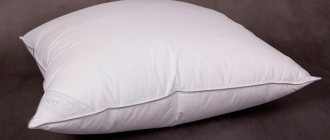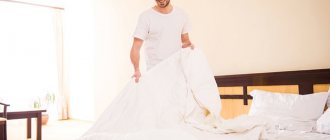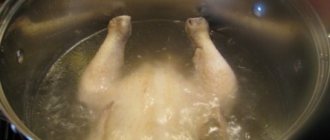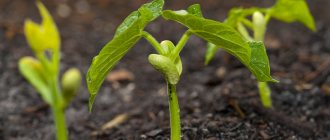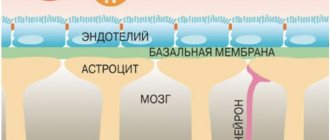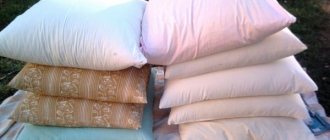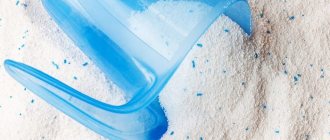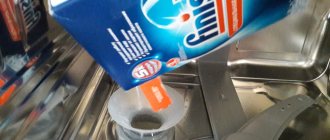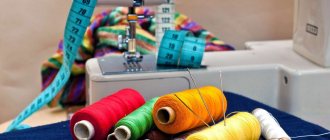Which pillows are better: Holofiber or bamboo?
Bamboo is suitable for lovers of natural materials, holofiber is for those who value durability. Both copies do not contain harmful components that could have a negative effect on the human body.
Interesting materials:
How to take bee bread correctly? How to take drinking collagen correctly? How to take glucosamine powder correctly? How to take Riboxin correctly? How to take flax seed correctly? How to take sports nutrition correctly? How to take Thiotriazolin tablets correctly? How to take thyroxine tablets correctly? How to take Verapamil correctly? How to take fat burners correctly?
How much and what materials do you need to sew the sides of a crib?
Crib bumpers are one of the most popular children's products, along with bed linen and discharge envelopes. If you are at least a little comfortable with a sewing machine, sewing the borders yourself will not be difficult. What materials are needed to sew crib bumpers?
- Textile. The ideal fabric is 100% cotton. The most popular cotton fabrics are calico (the most inexpensive option), percale, poplin, ranfors and satin. All fabrics without artificial additives are hypoallergenic and safe for children. If you plan to sew a side with removable covers, then in addition to the main fabric, you will also need fabric for the inner pillows. We recommend using dense Gost white calico; it is cheaper than teak and has sufficient density for this role.
- Filler. Depending on the type of side, you will need weight or roll filler. For pillow sides, a weighted filler made of polyester fibers (synthetic ball or comb) is used. For flat quilted sides, padding polyester with a density of 300 g is suitable. When choosing a weight filler, you need to pay attention to the grade. For children's products, it is better to use filler made from primary raw materials (i.e., grade 1), since grade 2 filler may contain impurities. When choosing padding polyester or any other roll filler, give preference to thermally bonded filler, because... No glue is used for its production, which can be harmful to the child.
- Ribbons for ties. The “simplest” version of ties is ties made of satin or grosgrain ribbon. If you choose a satin ribbon, we recommend making the ties removable, so they will last longer and will not lose their appearance when washed in the washing machine. More durable ties made from grosgrain ribbon, they do not require such delicate treatment as satin ones and look more expensive. You can also sew ties from the main fabric.
- Threads and zippers. You will need a zipper if you want to sew pillow sides with removable covers. For flat sides and pillows without covers, zippers are not needed.
How to calculate the consumption of materials for the sides of the crib?
Textile. The most common option is finished cushion cushions measuring 30x30cm. If you need bumpers on three sides, you will need 8 pillows, on four sides - 12 pillows.
With a fabric width of 150-160cm, 2 pillows require 35-40cm of fabric (taking into account shrinkage and seam allowances), respectively, for 8 pillows we will need 1.4-1.6m of fabric, for 12 pillows - 2.1-2.4m fabrics. Fabric consumption also depends on the type of fabric and your experience. Calico, for example, shrinks more than satin, so it is better to buy it at the rate of 40 cm for 2 pillows. If you are sewing for the first time, it is also better to take fabric with a small margin.
When using panels for the sides (in a standard set, as a rule, there are 4 panels), the fabric consumption should be reduced by 2 pillows. Those. subtract 35-40 cm from the required amount.
To calculate the consumption for a flat side, we need to measure the perimeter of the bed and determine the height of the side. Flat sides are most often sewn with a height of 30 to 40 cm. If you have a round crib, then most likely you need a side with a height of 40cm.
So, let's calculate the expense. For example, we have a rectangular crib measuring 120*60cm and we need to sew a side with a height of 35cm. We always take the internal dimensions into account (you can focus on the dimensions of the mattress suitable for your crib), because We will have sides on the inside, not on the outside.
Crib perimeter = 120+120+60+60. Total 3.6m. Be sure to add 7-10cm in width and height for shrinkage and seam allowances. Thus, for a finished border with a height of 35 cm and a fabric width of 150-160 cm, we will need 1.35 m of fabric (three strips 45 cm high).
An important point: before sewing, any cotton fabric must be decated, i.e. thoroughly steam or soak in warm water, dry and iron. The second option is more reliable. This way you will avoid problems with deformation of the finished product after washing.
Filler. The sides of the pillow can only be filled with weight filler (synthetic ball or comb) or the so-called “sandwich”. If you choose filling only with weight filler, then the standard consumption for one pillow is 150-200g. Depending on the density of the packing, i.e. for 12 pillows 1.8-2.4 kg. There are also softer types of fillers on the market (in our assortment this is 3D fiber filler), due to their softness their consumption is higher. One pillow will require 220-300g, i.e. for 12 pillows 2.7-3.6 kg.
If you decide to stuff the sides of the pillows with a “sandwich”, then you will need 100g padding polyester and a weight filler (synthetic ball or comb). The “sandwich” consists of two sheets of thin padding polyester, between which there is a weight filler. With this type of padding, the side becomes more even. The consumption of padding polyester with a width of 150cm for 5 pillows 30*30cm is 60cm (since padding polyester does not shrink), for 12 pillows you will need 1.5m. If you are worried that you won’t be able to cut straight, we recommend taking padding polyester with a small margin of 1.8-1.9 m. The consumption of weight filler (synthetic ball or comb) will be 80-100g per pillow, 1-1.2kg for 12 pillows.
To sew a flat border you will need 300g padding polyester. With a finished side height of 35cm, a standard crib needs 105-110cm of padding polyester; for a side with a height of 40cm, 120-125cm is needed.
Ribbons. For one tie you will need 30cm of grosgrain or satin ribbon. Pillows can be attached to the crib in 2 or 4 places (most often the upper and lower corners). For fastening at two points you will need 7.2 m, at four points - 14.4 m. A flat side, as a rule, is attached both at the top and at the bottom; the ties are located every 30-40 cm, i.e. The tape consumption is the same as when fastening at 4 points. If you want to make a double tie (in this case you will not need to process the edge, since the tape can simply be folded in half and sewn in), then the consumption must be multiplied by 2, it turns out 14.4 or 28.8 m for pillow sides and 28.8m for a flat side.
Some tailors prefer longer ties at a rate of 40cm per tie in one layer. It's a matter of convenience. Using the scheme described above, you can recalculate the consumption of grosgrain and satin ribbon for longer ties.
Threads. 1-2 spools if you only sew on a machine, 3-4 spools if you process the cut with an overlocker.
Zippers for removable covers. According to the number of pillows, the zipper width is 25-30cm.
How to restore synthetic winterizer?
Restore
the previous type of product is possible.
There are several ways to fluff up lumps of insulation in a down jacket. ... Straightening the insulation by hand
- Inspect the product to identify problem areas.
- Open the lining.
- Straighten the padding polyester
. - Secure the insulation by grabbing it with thread.
- Sew the lining back.
Interesting materials:
How to insert time in comments on YouTube? How to insert pictures into Tik Tok? How to insert hashtags? How to insert text in Tik Tok? How to embed chat in obs? How to enter a cheat code in GTA 5 on PS4? How to enter Facebook? How to enter a username in Roblox? How to enter a name in Among AS? How to enter a name in Roblox?
Care
Caring for a pillow made of synthetic filler comes down to cleaning it from dirt.
You need to follow basic rules:
- to wash the product so that the filler does not form clumps and lose its original shape and functionality.
- During the washing process, it is recommended to use special liquid soap or shampoo . You need to wash it by hand in a basin. The product should be dissolved in cool 30 degree water. Then leave the product for 30 minutes. Squeeze carefully. Unscrewing is prohibited. After this, you need to add conditioner-rinse to cope with the electrification and leave for another 10 minutes. It is necessary to rinse in running water. Dry on a horizontal surface in a well-ventilated area. To fluff up the holofiber balls, you need to whisk them periodically. Wash not often, only if necessary - once a year
Minuses
- Electrification . Lack of all synthetic materials. Special products will help solve this issue even during washing.
- Fragility . They quickly fall off and lose their shape and appearance if the products are not properly cared for.
- The support is bad . Leads to worsening neck pain.
- Softness . Pillows made of synthetic fill cannot support the head and neck in a certain position due to being too soft. Hardness and softness are adjusted during the filling process.
Processing the cut edge of the pillow cover fabric
Before sewing the seams of a decorative pillow cover, you first need to overcast the edges of the cover “in a circle” with an overlocker. Then fold the fabric with the right side inward and machine stitch the side seams. Set the stitch length to a medium size; stitching too often can destroy the fibers of the fabric. It is not necessary to select threads according to the color of the pillow fabric, but it is advisable. Do not use threads that are too thick; this will not make the pillow cover stronger, and the stitching in the seam with such thread will be worse. In the future, such a “weak” seam will “diverge” and the side seams will become very noticeable.
Description
This material is made in the form of a sheet, sheet, or balls. What is holofiber in pillows: for home textiles, the material is used in the form of balls.
To obtain a ball, many fibers are twisted into spirals. Polyester threads are thermally bonded to produce holofiber. The material is more wear-resistant and stronger than synthetic padding.
The balls retain the shape of the product, airiness, and softness. They do not roll down or turn into lumps during normal use. It is important not to machine wash such a product.
Product sizes
Standard sizes are used. 70x70 cm has always been common. Bed sets are mainly made for this size. Now the parameters of pillows 50x70 are becoming popular. For adults, this rectangular option is more useful. Bed linen is now being sewn for them more often.
Holofiber is used as a filler and for small decorative pillows. Their parameters are 40x40, 50x50.
How much does a 50x70 pillow weigh with this filling:
- average 800 g; light 500-600 g; dense 1 kg.
A product with parameters 70x70 of medium density will weigh a kilogram.
Tips for choosing
The quality of sleep, brain and back health depend on the pillow. General recommendations to help you decide on a purchase:
- Ask the seller for a quality certificate. The product must comply with Russian Federation standards. This will help you choose a good thing and not a fake with a cheaper filler.
- Find out the product size and weight. The amount of filling for holofiber pillows affects the elasticity and height of the pillow. These parameters correspond to a comfortable position of the neck and head so that the blood vessels are not pinched. Pillow height = shoulder length. On average, for adults it is 10-14 cm. Broad-shouldered athletes may need 16 cm.
- There are different shapes of pillows, in addition to square and rectangle: circle, triangle, heart. But such options are recommended only for decorating a room.
- The density of the pillow depends on your usual sleeping position. Back sleepers need a medium-firm product. In a lateral position you will need firm support. If a person is used to sleeping on his stomach, it is worth buying a soft pillow for comfort.
A cover made from natural fabric is recommended. The sensations will be more pleasant, there will be no static electricity outside. It is desirable that the bedstead be removable. Then it can be washed separately from the pillow; there is no need to rip it out.
When choosing a pillow filled with holofiber for decoration, you should take a product with added foam crumbs. It is denser, better and will retain its original shape longer.
pros
- Price . Pillows made from artificial fillers are usually much cheaper than their down and feather counterparts.
- Care . It is better to wash by hand. They dry instantly, do not lose their original qualities and do not require special storage conditions.
- Weight and volume . A pillow of standard sizes 50X70 weighs approximately 600 grams.
- Air exchange . The fibers allow air to pass through. Moisture evaporates quickly. Foreign odors do not linger. The pillow “breathes”.
- Thermoregulation . The filler adjusts to the ambient temperature - it will warm you in the cold and not overheat in the heat.
- Moisture resistance . When washed, all the advantages are preserved. Quickly evaporates moisture.
- Elasticity . The unique property of the fiber is to quickly return to its original shape. It does not wrinkle or cake for a long time.
- Hypoallergenic . Polyester fibers do not create a favorable environment for fungi, mold or viruses to live. The filler does not cause allergic reactions. Ideal for allergy sufferers and asthmatics.
- Hygiene . It doesn't smell like anything. Does not emit any toxic substances or foreign odors.
